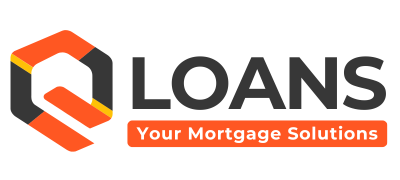
Can I get a loan with irregular income?
⚡ A Low Doc Loan is particularly helpful for self-employed individuals or business owners who have irregular income.
01
Flexible Requirements
Perfect for self-employed or freelancers with irregular income who might not have standard documentation.
02
Quick Approval
Often a faster application process, so you get your funds sooner.
03
Simplified Paperwork
Less documentation needed, making the application process easier and less time-consuming.
04
Business Cashflow
Allows you to secure loans without disrupting your business operations to gather extensive paperwork.

Why work with QLoans.au?
We understand the complexities of securing a loan that aligns with your financial and property goals.
Who we are
We’re mortgage solution-ist.
✓
We make it our mission to share the journey with you.
✓
We present interest rates and loan terms most favourable to your financial situations.
✓
Talk to Natalee – Let’s get your loan sorted!
What we do
We manage your loan approval.
✓
Personalised advice and support from the initial consultation to post-settlement.
✓
Competitive rates from over 88 lenders.
✓
Flexible consultation options through phone and online video at a time that suits your schedule.
✓
A comprehensive financial review to determine the most suitable loan structure within your borrowing capacity.
Why use our service
We resolve your concerns.
✓
Poor credit score
✓
Income instability
✓
Insufficient savings
✓
No deposit
✓
High debt levels
✓
Soaring property prices
✓
Clash of location and budget
✓
Complex application process

Why use the service of a mortgage broker?
As your mortgage broker, Natalee at QLoans.au helps you find the best loan options by leveraging access to multiple lenders and personalised service, saving you time and effort.
Golden nuggets on the topic [FAQs]
What’s a low doc loan, and can it help me avoid losing my off-the-plan deposit?
- Designed for individuals who might not have the standard documentation typically required for traditional loans.
- Beneficial for self-employed individuals, freelancers, or small business owners with irregular or non-traditional income streams.
- Applicants provide alternative documentation, such as bank statements, business activity statements, and income declarations.
Full Doc | Low Doc | Alt Doc | No Doc
- Full Doc: Extensive documentation, lower risk, potentially better rates.
- Low Doc: Minimal docs, suitable for self-employed with irregular income.
- Alt Doc: Flexible docs, broader range accepted.
- No Doc: No income proof, equity-based, rare and high-interest.
Is it easy to get low doc loan approval?
- Find out which documents you can provide, what your needs are, and which lenders you can qualify with.
- Select the lender with the lowest interest rate, fees, and LMI premium, as well as the loan features that you require.
- Present your application in a way to make sure it is seen favourably by the lender.
- Pro-tip: Only provide the documents requested by the lender, nothing more!
What are the main features of low doc loan?
- Flexible income verification: Accepts alternative documents like business activity statements (BAS), bank statements, and accountant letters.
- Higher interest rates: Often have higher interest rates than standard home loans.
- Lower Loan-to-Value Ratio (LVR): Requires a larger deposit.
- Limited loan features: Some features might be restricted or unavailable.
- Additional fees: Some lenders may charge higher fees for low-doc loans.
What do I need to look out for?
- Higher interest rates: Depends on the lender and the type of verification or supporting documentation you can provide.
- Larger deposit: Typically 20% of the purchase price is required.
- LMI: Mortgage insurance is usually applicable if you borrow over 60% Loan-to-Value Ratio (LVR).
Am I eligible to get a low doc loan?
- Generally, the borrower must be self-employed in the same industry for at least a year.
- Alternatives to traditional income verification, such as BAS, business bank statements, and accountant letters, are generally accepted.
- Different lenders have varying policies. The maximum LVR without LMI is determined case by case.
Should I and how do I refinance from Low Doc to Full Doc?
- Yes, you should. When you can provide full income evidence, you can qualify with more lenders at a much cheaper rate and have access to more products.
- Documents needed for a full doc loan:
- Last two years’ financial statements (profit and loss and balance sheet).
- Last two years’ business tax returns.
- Last two years’ personal tax returns.
- Last two years’ notices of assessment.
- 6 months home loan statements.
What documents do I need to provide?
- Supporting documents to verify your declared income.
- Main documents that can be used to verify your income:
- 6- to 12-month BAS statement showing a high turnover.
- An accountant letter verifying your income.
- Business bank statements showing a high turnover.
- Interim financial statements.
- Verification of ABN registration.
Why do lenders ask for Business Activity Statement (BAS)?
- BAS was introduced by the Australian Tax Government (ATO) to report GST and PAYG withholding tax obligations.
- Allows lenders to verify a client’s turnover and decrease the risk that comes with low doc loans.
How does lenders calculate my income?
- Most lenders require your previous four quarters’ BAS, which equates to twelve months of statements.
- Each quarter’s turnover will be calculated to produce a gross annual turnover.
- Some lenders use 40% of your turnover as your income, while others may use 50%.
All about the BAS
- Not every lender uses the 40% rule. Some use a higher percentage of turnover or calculate your income using a different method.
- BAS is the most widely accepted form of income verification for low doc loans.
Pros & Cons of low doc loan
- Pros:
- Accessibility for self-employed and non-traditional earners.
- Flexible documentation requirements.
- Potentially faster approval process.
- Cons:
- Higher interest rates than full-documentation loans.
- May require a larger deposit (typically 20%).
- Limited lender options.
- Lenders Mortgage Insurance is usually required if you borrow at over 70% LVR.
Property purchasing costs
- Minimum of 5% deposit.
- Stamp duty.
- Property title transfer fee.
- Registration fees.
- Conveyancing fees.
- Inspections including building/strata and pest.
- Home loan set up fees.
- Lenders Mortgage Insurance (LMI).
Property selling costs
- Agent Fees
- Marketing Costs
- Conveyancing Fees
- Capital Gains Tax (CGT)
- Presale Repairs and Renovations
- Styling/ Home Staging
- Auctioneer’s Fees
- Lender Fees
- Moving Costs
Need a mortgage consultation?
We’re here to provide you with the latest updates & solutions.
Natalee Q
+61 426 224 229
Natalee@QLoans.au
Australia Wide
Meet virtually
Apply digitally
Approved Swiftly
Mon to Sat: 8am – 6pm
Discover Mortgage 101 on our YouTube channel to debunk mortgage misconceptions.
Explore mortgage insights and pave your path to financial freedom sooner with essential tips from our eBook collection.
Crunching numbers just got easier with our online calculators. However, if you prefer your mortgage broker to do the math, give Natalee a call at 0426 224 229.

